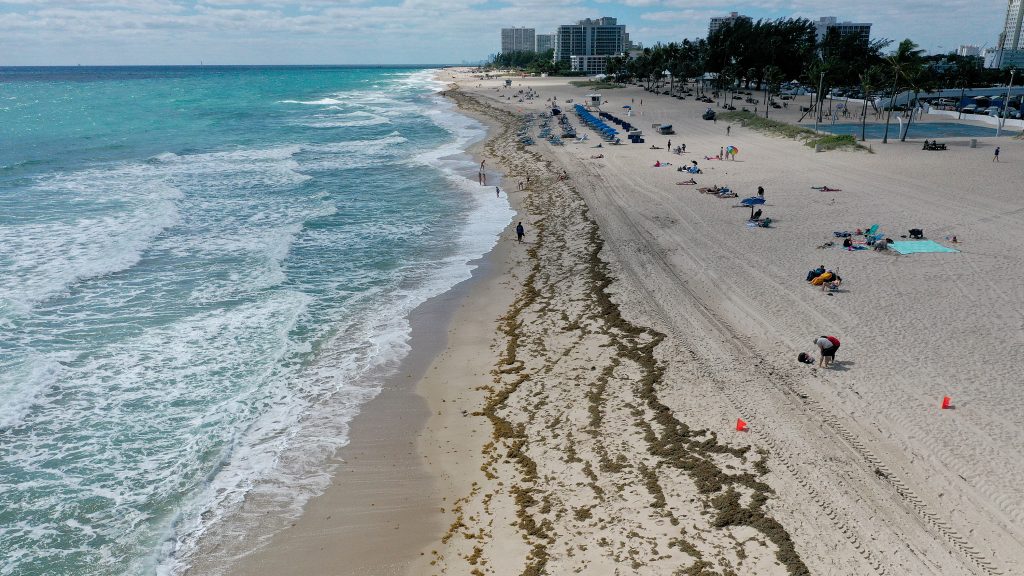The 8,000 km wide seaweed formation could spoil the tourist season in the area.
It is brown, weighs millions of tons, stretches for more than 8,000 km, and goes all the way to the coast of Florida. The massive algae blooms common in the Gulf of Mexico and the Atlantic Ocean will cover beaches with spongy pustules and bring with them a pungent, rotten-egg odor. He writes Watchman.
The brown formation, made of algae called sargassum, is the latest in a series of giant seaweed monsters that scientists have spotted in the Atlantic Ocean since 2011, but it may be the largest yet. It’s hurtling west through the Caribbean Sea, and huge carpets of algae have already washed ashore on the beaches of Cancun, Mexico, and Key West, Florida.
The Brown Swamp doubles in size each month from November to January, and now forms a continuous belt larger than the continental United States. Chunks of the kelp monster are expected to hit Florida beaches and elsewhere along the Gulf of Mexico this summer, causing trouble for tourists.
The brown formation is maintained by oxygen-filled berry-like bubbles on the surface of the water. But when bits of it make it ashore and decompose in the sun, hydrogen sulfide is released into the air, giving it a stink-egg smell. Not only is this annoying, but it can also exacerbate respiratory problems like asthma.
“It stinks and drives away tourists,” he said. Chuanmin isa University of South Florida oceanographer who tracks Sargassum blooms via satellite.
Sargassums have long formed naturally in the Atlantic Ocean and provide a spacious, floating open water habitat for animals such as turtles, birds, crabs, and shrimp. Some animals, like the sargassum fish, live their entire lives inside a brown, floating seaweed monster. Seaweed also absorbs carbon dioxide.
However, sargassum can cause problems when washed ashore, and scientists have seen a significant increase in the 1.5- to 2-meter-high mounds that routinely clog beaches in recent decades.
“The low season of the plant cycle is higher now than it was five or six years ago,” he told NPR. Brian Barnesresearcher at the University of South Florida College of Maritime Affairs.
Researchers do not yet know the exact cause of the monstrous seaweed formations, but they suspect that the seasonal nature of the growth is related to pollution from large waterways. Phosphorus and nitrogen, which algae feed on, are regularly washed into the oceans by water from fertilizers used in agriculture.
And the climate crisis may be contributing to the problem by causing stronger storms – which raise more algae – and flash floods – which wash pollution into the sea.












































